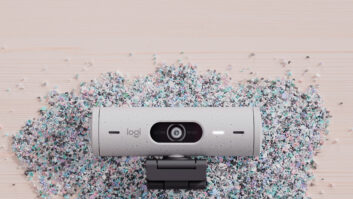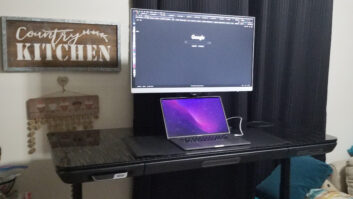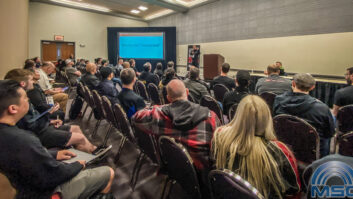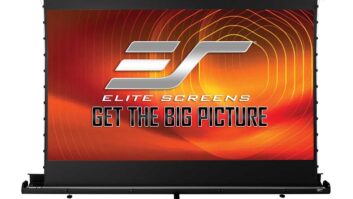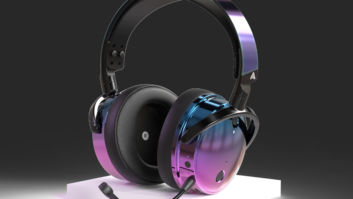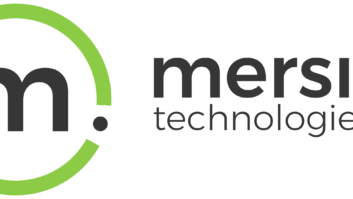Englewood, Colo. –Microsoft’s opening-price 10.6-inch Surface RT tablet is more profitable on a percentage gross-margin basis than the opening-price 9.7-inch iPad or 7.9-inch iPad mini, IHS iSuppli said.
Based on a preliminary teardown analysis of the $599 Wi-Fi-equipped 32GB Surface RT, iSuppli found that the Surface’s bill of materials and manufacturing costs comes to $284, including optional Touch Cover. With a retail price of $599, the Surface RT “generates hardware and manufacturing profits that are, in percentage terms, higher than the low-end iPad,” iSuppli said. “Even at a price of $499 without the Touch Cover, Microsoft will generate a profit margin that is greater than the low-end iPad in percentage terms and on a per-unit basis.”
IHS estimates on a preliminary basis that the Touch Cover costs Microsoft $16 to $18 per unit to build but adds $100 to the 32GB Surface’s retail price.
iSuppli’s preliminary manufacturing costs exclude such additional expenses as software, licensing, royalties and other expenditures.
The total cost of manufacturing the opening-price fourth-generation iPad wasn’t available, but in a separate preliminary tear-down analysis, iSuppli found that the opening-price $329 16GB iPad mini costs $198 to build, including bill of materials and manufacturing costs. The iPad mini is slightly more profitable on a percentage basis than the comparably equipped version of the New iPad when it was released in March 2012, iSuppli noted.
The Surface “represents a key element in Microsoft’s strategy to transform itself from a software maker into a devices and services provider,” said Rassweiler. “Key to this strategy is offering hardware products that generate high profits on their own, similar to what Apple has achieved with its iPad line. From a hardware perspective, Microsoft has succeeded with the Surface, offering an impressive tablet that is more profitable, on a percentage basis, than even the lucrative iPad based on current retail pricing.”
Microsoft’s Touch Cover, iSuppli added, is “an example of a feature that can encourage users to upgrade to a higher-end model that generates more profits for a company—similar to premium-priced tablets that feature larger quantities of memory, iSuppli said. “With options like the Touch Cover or extra flash, a manufacturer can offer a low-end model at a base price that meets a psychological threshold—$499 in this case—with the hope that consumers will impulsively opt for extra features or memory upgrades that generate major profits.”
In referring to the iPad mini, Rassweiler said Apple “is sticking to the premium-brand strategy it has always used for its media tablet and smartphone products.” Apple’s strategy “entails offering differentiated hardware that justifies higher price tags than comparable products,” he continued. “This differs markedly from Amazon’s 7-inch Kindle Fire HD and Google’s Nexus 7 tablets, both of which are essentially low-margin or no-margin giveaways at a $199 retail price. Apple makes healthy margins on its hardware, while Amazon and Google employ different strategies with their 7-inch tablets.”
Nonetheless, Amazon’s Kindle Fire HD and Google’s Nexus 7 “have set new consumer pricing expectations for 7.x-inch media tablets, starting at the $199 point,” Rassweiler said. “These low-priced tablets pose a competitive challenge to Apple’s media tablet dominance.
“Amazon and Google want to put tablets in consumers’ hands—even if it means doing so at a minimal hardware profit— with the intent of making their money on the content users buy, and/or the advertising and paid content they will be exposed to by buying the devices,” Rassweiler said.
With the iPad mini, Apple continues its strategy of garnering greater profits from sales of higher-end models that have greater amounts of flash memory, iSuppli noted. Because Apple provides consumers no memory-card slots, the only way users can upgrade the amount of flash available on the product is to buy the higher end 32GB and 64GB models, iSuppli noted.
“These higher-end models—with or without 4G wireless capabilities—are priced at $100 intervals, at $429 and $529,” yet the incremental cost of the additional flash memory for Apple is only $9.60 for the additional 16GB of memory and $19.20 for an additional 32GB of memory.” As a result, the 32GB version of the iPad mini generates about $90 in additional profit for Apple for every unit sold compared to the base 16GB model, iSuppli said. For the 64GB model, Apple’s profit is about $171 higher than the 16GB version.
Englewood, Colo. –Microsoft’s opening-price 10.6-inch Surface RT tablet is more profitable on a percentage gross-margin basis than the opening-price 9.7-inch iPad or 7.9-inch iPad mini, IHS iSuppli said.
Based on a preliminary teardown analysis of the $599 Wi-Fi-equipped 32GB Surface RT, iSuppli found that the Surface’s bill of materials and manufacturing costs comes to $284, including optional Touch Cover. With a retail price of $599, the Surface RT “generates hardware and manufacturing profits that are, in percentage terms, higher than the low-end iPad,” iSuppli said. “Even at a price of $499 without the Touch Cover, Microsoft will generate a profit margin that is greater than the low-end iPad in percentage terms and on a per-unit basis.”
IHS estimates on a preliminary basis that the Touch Cover costs Microsoft $16 to $18 per unit to build but adds $100 to the 32GB Surface’s retail price.
iSuppli’s preliminary manufacturing costs exclude such additional expenses as software, licensing, royalties and other expenditures.
The total cost of manufacturing the opening-price fourth-generation iPad wasn’t available, but in a separate preliminary tear-down analysis, iSuppli found that the opening-price $329 16GB iPad mini costs $198 to build, including bill of materials and manufacturing costs. The iPad mini is slightly more profitable on a percentage basis than the comparably equipped version of the New iPad when it was released in March 2012, iSuppli noted.
The Surface “represents a key element in Microsoft’s strategy to transform itself from a software maker into a devices and services provider,” said Rassweiler. “Key to this strategy is offering hardware products that generate high profits on their own, similar to what Apple has achieved with its iPad line. From a hardware perspective, Microsoft has succeeded with the Surface, offering an impressive tablet that is more profitable, on a percentage basis, than even the lucrative iPad based on current retail pricing.”
Microsoft’s Touch Cover, iSuppli added, is “an example of a feature that can encourage users to upgrade to a higher-end model that generates more profits for a company—similar to premium-priced tablets that feature larger quantities of memory, iSuppli said. “With options like the Touch Cover or extra flash, a manufacturer can offer a low-end model at a base price that meets a psychological threshold—$499 in this case—with the hope that consumers will impulsively opt for extra features or memory upgrades that generate major profits.”
In referring to the iPad mini, Rassweiler said Apple “is sticking to the premium-brand strategy it has always used for its media tablet and smartphone products.” Apple’s strategy “entails offering differentiated hardware that justifies higher price tags than comparable products,” he continued. “This differs markedly from Amazon’s 7-inch Kindle Fire HD and Google’s Nexus 7 tablets, both of which are essentially low-margin or no-margin giveaways at a $199 retail price. Apple makes healthy margins on its hardware, while Amazon and Google employ different strategies with their 7-inch tablets.”
Nonetheless, Amazon’s Kindle Fire HD and Google’s Nexus 7 “have set new consumer pricing expectations for 7.x-inch media tablets, starting at the $199 point,” Rassweiler said. “These low-priced tablets pose a competitive challenge to Apple’s media tablet dominance.
“Amazon and Google want to put tablets in consumers’ hands—even if it means doing so at a minimal hardware profit— with the intent of making their money on the content users buy, and/or the advertising and paid content they will be exposed to by buying the devices,” Rassweiler said.
With the iPad mini, Apple continues its strategy of garnering greater profits from sales of higher-end models that have greater amounts of flash memory, iSuppli noted. Because Apple provides consumers no memory-card slots, the only way users can upgrade the amount of flash available on the product is to buy the higher end 32GB and 64GB models, iSuppli noted.
“These higher-end models—with or without 4G wireless capabilities—are priced at $100 intervals, at $429 and $529,” yet the incremental cost of the additional flash memory for Apple is only $9.60 for the additional 16GB of memory and $19.20 for an additional 32GB of memory.” As a result, the 32GB version of the iPad mini generates about $90 in additional profit for Apple for every unit sold compared to the base 16GB model, iSuppli said. For the 64GB model, Apple’s profit is about $171 higher than the 16GB version.
Englewood, Colo. –Microsoft’s opening-price 10.6-inch Surface RT tablet is more profitable on a percentage gross-margin basis than the opening-price 9.7-inch iPad or 7.9-inch iPad mini, IHS iSuppli said.
Based on a preliminary teardown analysis of the $599 Wi-Fi-equipped 32GB Surface RT, iSuppli found that the Surface’s bill of materials and manufacturing costs comes to $284, including optional Touch Cover. With a retail price of $599, the Surface RT “generates hardware and manufacturing profits that are, in percentage terms, higher than the low-end iPad,” iSuppli said. “Even at a price of $499 without the Touch Cover, Microsoft will generate a profit margin that is greater than the low-end iPad in percentage terms and on a per-unit basis.”
IHS estimates on a preliminary basis that the Touch Cover costs Microsoft $16 to $18 per unit to build but adds $100 to the 32GB Surface’s retail price.
iSuppli’s preliminary manufacturing costs exclude such additional expenses as software, licensing, royalties and other expenditures.
The total cost of manufacturing the opening-price fourth-generation iPad wasn’t available, but in a separate preliminary tear-down analysis, iSuppli found that the opening-price $329 16GB iPad mini costs $198 to build, including bill of materials and manufacturing costs. The iPad mini is slightly more profitable on a percentage basis than the comparably equipped version of the New iPad when it was released in March 2012, iSuppli noted.
The Surface “represents a key element in Microsoft’s strategy to transform itself from a software maker into a devices and services provider,” said Rassweiler. “Key to this strategy is offering hardware products that generate high profits on their own, similar to what Apple has achieved with its iPad line. From a hardware perspective, Microsoft has succeeded with the Surface, offering an impressive tablet that is more profitable, on a percentage basis, than even the lucrative iPad based on current retail pricing.”
Microsoft’s Touch Cover, iSuppli added, is “an example of a feature that can encourage users to upgrade to a higher-end model that generates more profits for a company—similar to premium-priced tablets that feature larger quantities of memory, iSuppli said. “With options like the Touch Cover or extra flash, a manufacturer can offer a low-end model at a base price that meets a psychological threshold—$499 in this case—with the hope that consumers will impulsively opt for extra features or memory upgrades that generate major profits.”
In referring to the iPad mini, Rassweiler said Apple “is sticking to the premium-brand strategy it has always used for its media tablet and smartphone products.” Apple’s strategy “entails offering differentiated hardware that justifies higher price tags than comparable products,” he continued. “This differs markedly from Amazon’s 7-inch Kindle Fire HD and Google’s Nexus 7 tablets, both of which are essentially low-margin or no-margin giveaways at a $199 retail price. Apple makes healthy margins on its hardware, while Amazon and Google employ different strategies with their 7-inch tablets.”
Nonetheless, Amazon’s Kindle Fire HD and Google’s Nexus 7 “have set new consumer pricing expectations for 7.x-inch media tablets, starting at the $199 point,” Rassweiler said. “These low-priced tablets pose a competitive challenge to Apple’s media tablet dominance.
“Amazon and Google want to put tablets in consumers’ hands—even if it means doing so at a minimal hardware profit— with the intent of making their money on the content users buy, and/or the advertising and paid content they will be exposed to by buying the devices,” Rassweiler said.
With the iPad mini, Apple continues its strategy of garnering greater profits from sales of higher-end models that have greater amounts of flash memory, iSuppli noted. Because Apple provides consumers no memory-card slots, the only way users can upgrade the amount of flash available on the product is to buy the higher end 32GB and 64GB models, iSuppli noted.
“These higher-end models—with or without 4G wireless capabilities—are priced at $100 intervals, at $429 and $529,” yet the incremental cost of the additional flash memory for Apple is only $9.60 for the additional 16GB of memory and $19.20 for an additional 32GB of memory.” As a result, the 32GB version of the iPad mini generates about $90 in additional profit for Apple for every unit sold compared to the base 16GB model, iSuppli said. For the 64GB model, Apple’s profit is about $171 higher than the 16GB version.




